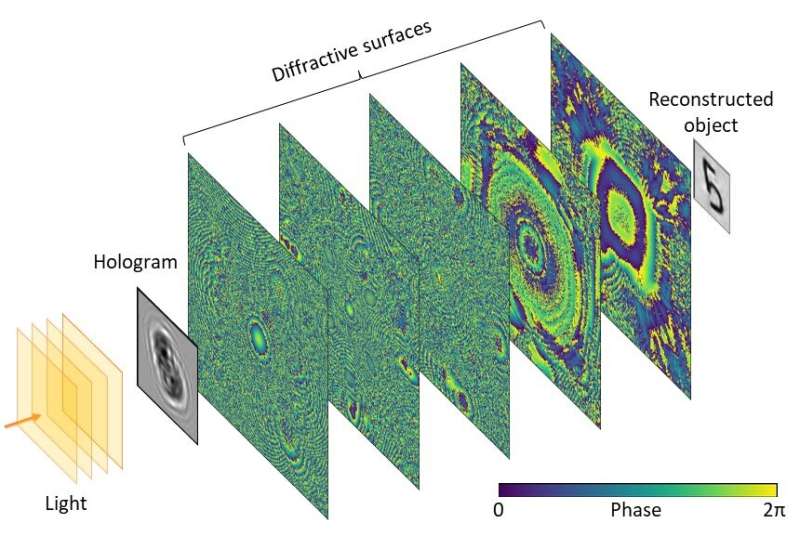Phys.org November 2, 2021
Researchers at UCLA have developed a computer-free, all-optical process for the reconstruction of holograms using diffractive networks, diffractive network is an all-optical processor composed of a set of spatially engineered diffractive surfaces that collectively compute a desired transformation of an input light field through light-matter-interaction and diffraction. The spatial features of a diffractive network are trained and optimized for a given task using deep learning in a computer. After the training is complete, the diffractive surfaces can be fabricated and assembled to form a physical network that can all-optically reconstruct an input hologram of an unknown object or scene, at the speed of light and without any external power, except for the illumination light. The entire diffractive network architecture is very thin and spans only ~225 times the wavelength of light, instantaneously reconstructs an object from its hologram in less than 1 picosecond, achieves superior image reconstruction quality, enhanced depth-of-field, and higher diffraction efficiency. The processor can find many applications in different fields such as holographic imaging, microscopy, sensing and display related applications…read more. Open Access TECHNICAL ARTICLE

Computer-Free, All-Optical Reconstruction of Holograms Using Diffractive Networks. Credit: UCLA Engineering Institute for Technology Advancement